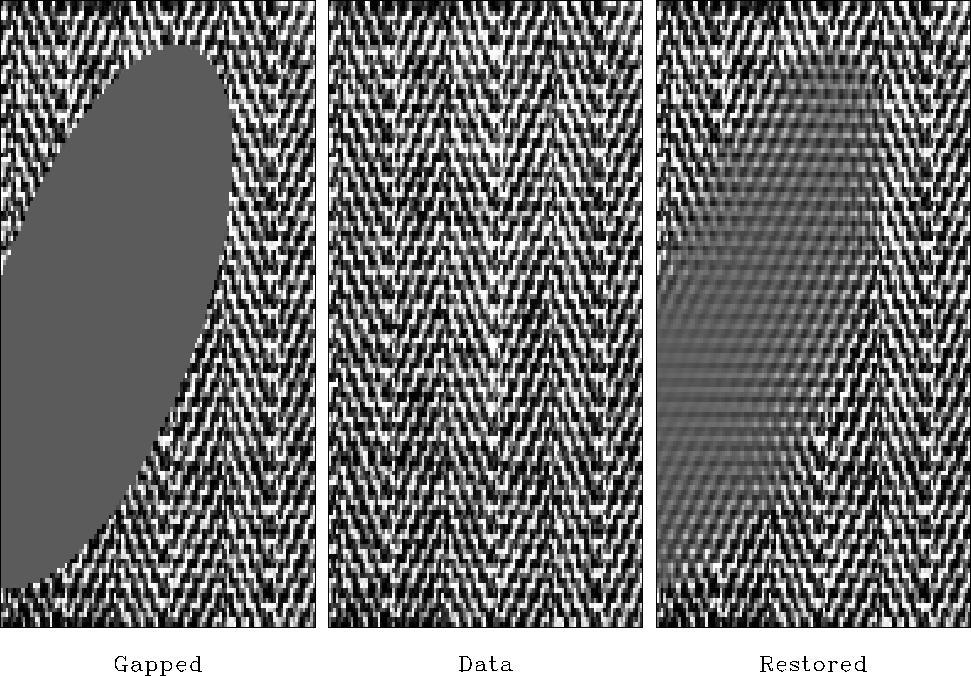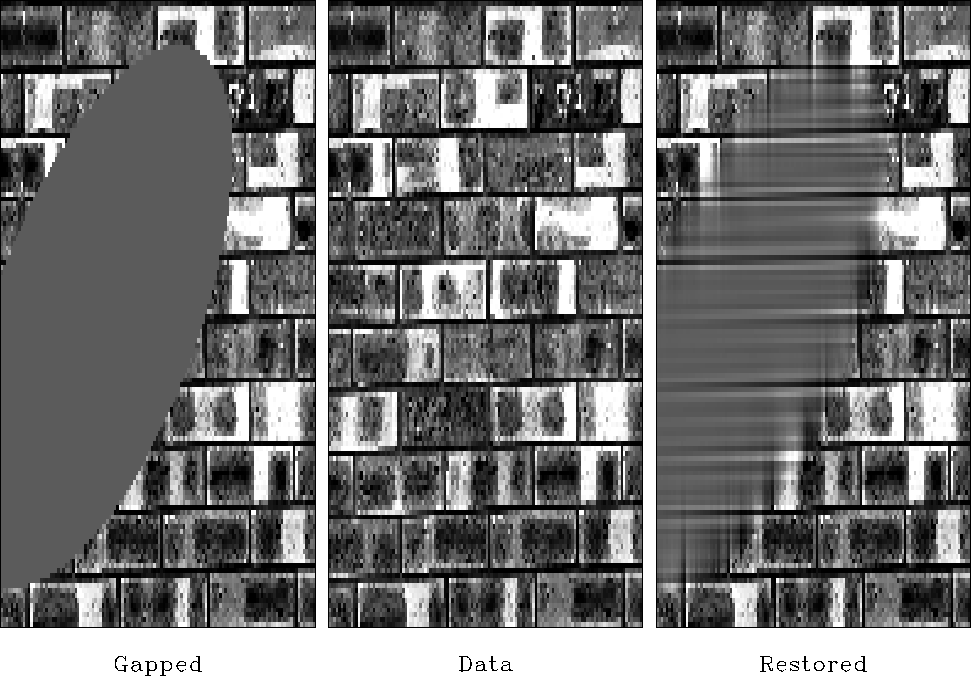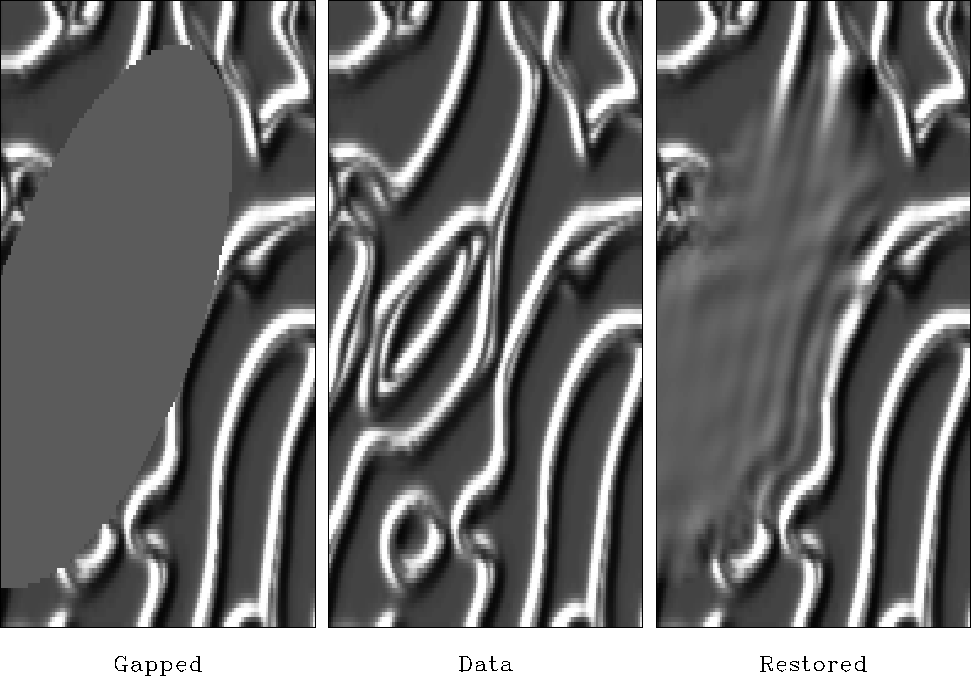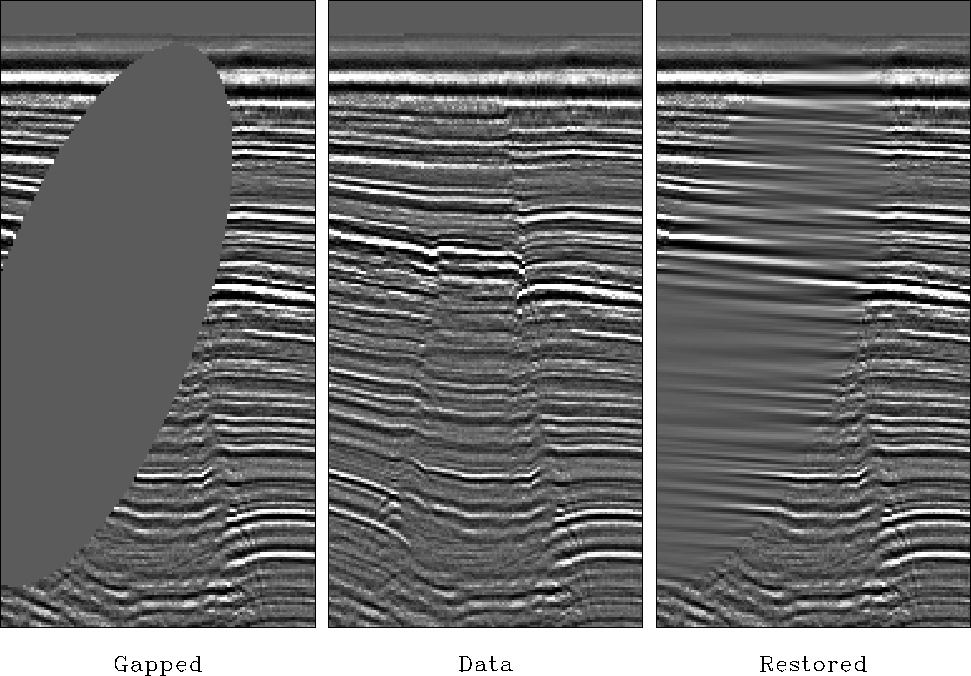




Next: About this document ...
Up: Multidimensional deconvolution examples
Previous: 2-D MODELING AND DECON
Figures
8-11
demonstrate the success
and lack of success of a process
to replace missing data
by data of the correct spectrum.
Although real data is always better than synthetic data,
especially synthetic data produced with
a primitive theory involving only spectra,
the fact is that synthetic data is
often better than zero data.
In geophysical parameter fitting (inversion)
you would not want to fit parameters to synthetic data,
but in imaging processes like migration,
synthetic data is better than zero data.
This would be true for Figure 11.
herr-hole-fill
Figure 8
The herringbone texture is a patchwork of two textures.
We notice that data missing from the hole tends
to fill with the texture at the edge of the hole.
The spine of the herring fish, however, is not modeled at all.
![[*]](http://sepwww.stanford.edu/latex2html/movie.gif)

brick-hole-fill
Figure 9
The brick texture has a mortar part
(both vertical and horizontal joins) and a brick surface part.
These three parts enter the empty area
but do not end where they should.
![[*]](http://sepwww.stanford.edu/latex2html/movie.gif)

ridges-hole-fill
Figure 10
The theoretical model
is a poor fit to the ridge data
since the prediction must try to match ridges
of all possible orientations.
This data requires a broader theory which incorporates
the possibility of nonstationarity (space variable slope).
![[*]](http://sepwww.stanford.edu/latex2html/movie.gif)

WGstack-hole-fill
Figure 11
Filling the missing seismic data.
The imaging process known as ``migration'' would
suffer diffraction artifacts in the gapped data
that it would not suffer on the restored data.
![[*]](http://sepwww.stanford.edu/latex2html/movie.gif)






Next: About this document ...
Up: Multidimensional deconvolution examples
Previous: 2-D MODELING AND DECON
Stanford Exploration Project
3/1/2001




